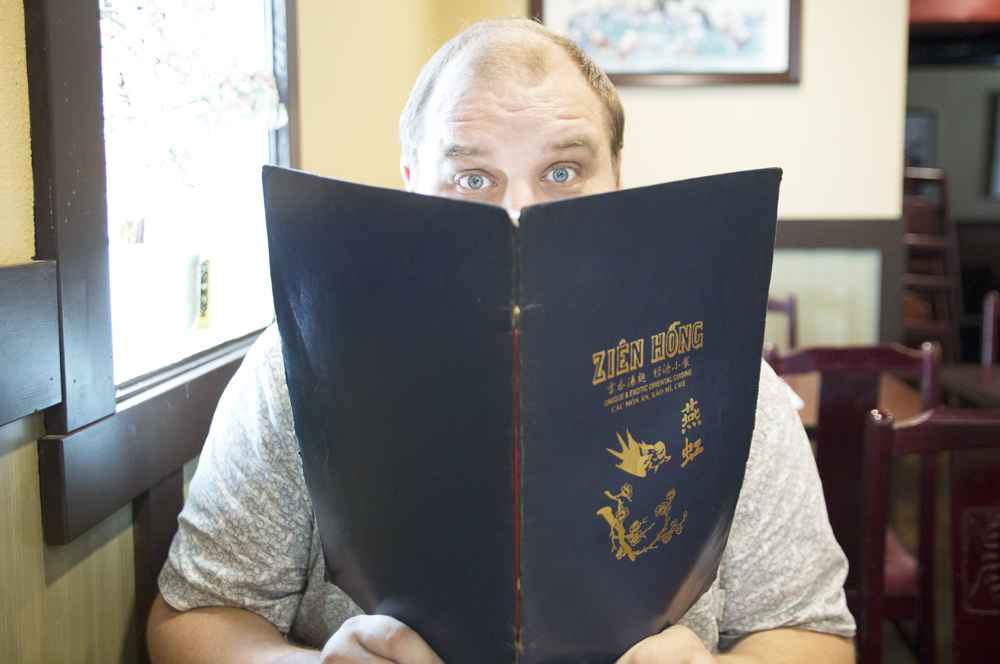The coffee cup caper
Artists and art aficionados view a work of art as a thing of ethereal perfection, exalted far above the ordinary materials that make it up. Student Karl Hegbloom is learning how sensitive owners of art can become.
That sensitivity by a university department is threatening to cost him almost $1,800 or expulsion from the university.
Hegbloom admits he threw a partial cup of coffee at a pillar in the Student Health and Counseling lobby. The act caused what he considers minor damage and staining to a tapestry by art professor Susan Harlan in the lobby.
SHAC and Harlan regard the tapestry as totally violated and insist Hegbloom pay the $1,774 needed to create a replacement.
Hegbloom doesn’t understand why SHAC should become so upset by a few brown stains and metal scarring on their tapestry.
Virtually all the events described here come from Hegbloom. Michele Toppe, assistant dean of students, pointed out that she cannot comment on any case being handled by the Office of Student Affairs.
"In order to protect a student’s privacy, I am prohibited from any specifics about incidents that are submitted to me that any students have violated the Student Code of Conduct," she said.
Harlan, professor of art and frequent creator of art installations, said the coffee splattered completely across the tapestry.
"A stain on a piece of art is not like a stain on a couch," she said. "You can’t just send it to the cleaners."
Harlan said the normal cost of the SHAC tapestry would be five or six thousand dollars. Its cost was defrayed by special university funds.
The almost sacred identity of a fine work of art to an artist or appreciator can be illustrated by a story attributed to Pablo Picasso.
After World War II, a millionaire from the United States visited his studio with a view to making a purchase. She paused in front of one of his more enigmatic creations.
"What does this picture represent?" she asked. Picasso answered, "Two hundred thousand dollars."
Hegbloom recounted to what he considers the essential facts of the case. On May 5 he awoke with an ear problem and went to the health service for help, sipping a cup of Seattle’s Best coffee on his way.
Upon checking into the health service, he was informed he was not eligible for treatment, since his class load had fallen below the level required for participation.
In apparent anger and frustration he threw his cup with its remaining coffee against a pillar. The subsequent rebound of the cup and what Hegbloom describes as "a few drops of coffee" ended against the tapestry, which hangs before the main front window.
The upshot was that he faced a violation of the Student Conduct Code, involving a conference with Toppe. Ultimately, he said, he waived his right to a hearing and agreed to pay for the damage.
"It seemed fine at the time," he said. "I felt there was no serious damage. It would amount to an apology."
Although Mary Beth Collins, director of SHAC, did not choose to comment prior to this article, Hegbloom learned that SHAC regarded the damage as amounting to total degradation of the tapestry. Hegbloom’s momentary lapse could only be repaired by commissioning a new tapestry at a cost, he said, of $1,774.
"If I don’t pay, they can expel me from school. I don’t need it," he said. He is a late-comer to a college education, having worked for some years to make higher education possible.
In a subsequent confrontation with Collins, Hegbloom admits he called her "a fraud" and realizes "it was a mistake." She asked him to leave. As a consequence, he revealed, he is forbidden to enter the health service facility.
Hegbloom maintains the damage is minor and almost unnoticeable. Further, he claims, it could be easily repaired. SHAC disagrees, Hegbloom said. The university maintains that the integrity of the piece has been violated beyond repair and the only equitable solution is a replacement.
SHAC rules prohibit photography of the interior of the health service, making it impossible to photograph the damage. Close inspection shows at least a series of small brown coffee splotches near the foot of the left hand panel of the three-panel tapestry.
Harlan has said the entire tapestry was affected. The tapestry is composed of sensitive, almost translucent material that would not lend itself readily to any kind of scrubbing.
There is also some kind of scarring to a section of the metal tube that forms the bottom of the tapestry. Hegbloom maintains these defects could be easily corrected.
SHAC does not agree. He is threatening to sue but claims there are legal reasons he cannot sue until or unless he is sued. He has tried to gain a personal audience with President Daniel Bernstine but has been referred away from that recourse.
He also admits he has not sought the counsel of the Student Legal and Mediation Services.
"I didn’t think of that," he said.



